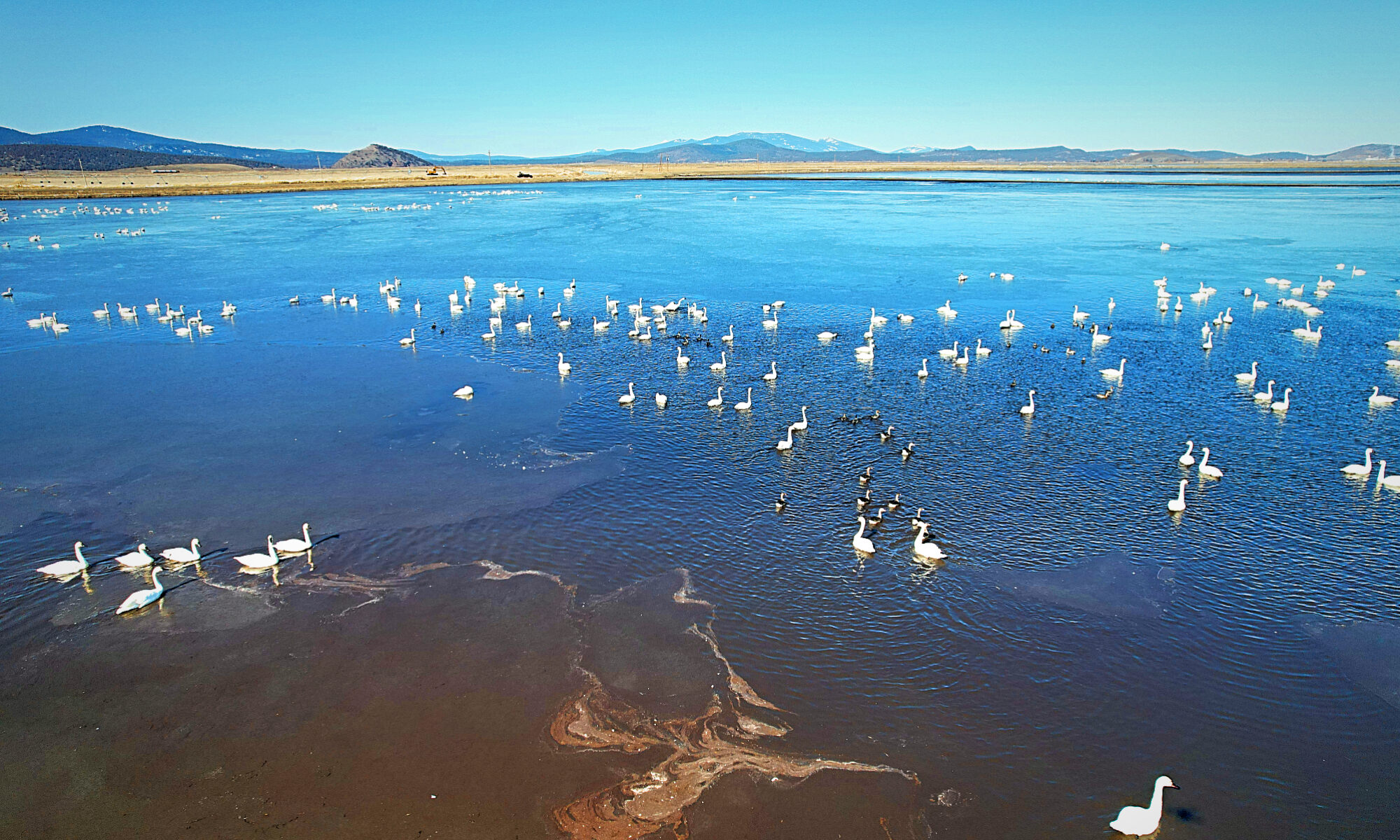If you’ve driven Stateline Road with the windows down lately, you’ve heard the trilling of blackbirds, honking of Canada geese, and the squawking of herons coming from the Lower Klamath refuge.
It’s as if they’re celebrating the return of the wetlands to the refuge.
Since mid-April, the Klamath Drainage District has been sending water to Unit 2 of the Lower Klamath National Wildlife Refuge (LKNWR).

Using recycled water from within the district, KDD has been able to send almost 120 acre-feet of water a day to Lower Klamath via the Ady Canal. At the time of this writing (approximately three weeks), that amounts to almost 2,500 acre-feet.
By employing KDD’s recirculation pumping stations, the district is able to recycle up to 35,000 acre-feet of water a year. This enables the district to reuse or recycle more than 75% of the water used by its patrons.
This benefits KDD family farmers and ranchers by ensuring they have water during the growing season. It also creates ecological opportunities, such as providing water to LKNWR.
KDD landowners have long been ardent supporters of the Lower Klamath refuge. Over the last four years, the district has sent water across the border to LKNWR to help allay the water allocation shortcomings. One instance, between December of 2021 and August, 2022, KDD sent approximately 3,100 acre-feet of much needed water to the Lower Klamath wetlands.
After the historic droughting of Lower Klamath National Wildlife Refuge by the Bureau of Reclamation, the storied wetlands are having a banner year after going dry for several years.
On March 7th, KDD along with Modoc Nation, South Suburban Sanitary District, Ducks Unlimited, Friends of Klamath Basin Birding, the Klamath Audubon Society, and the Klamath Water Users Association hosted the Lower Klamath Renaissance Tour to bring attention to the Lower Klamath refuge and discuss projects that could bring long-term water to its wetlands.
Not long after the Lower Klamath Renaissance Tour, on March 25th, with much fanfare and press coverage, Tulelake Irrigation District fired up its historic D-Plant station to pump water from Sump 1A in Tule Lake through Sheepy Ridge to the desiccated beds of Lower Klamath Lake. However, due to the Bureau of Reclamation’s restricted water allocation for the Klamath Project 2024 irrigation season, pumping ceased on April 15th.
In the three weeks that TID pumped water to Lower Klamath, water flowed throughout the refuge, bringing much needed moisture to units that haven’t received water in over three years. And with the water, the wetlands returned.
The combination of the districts’ efforts has been a boon to the birds of the Pacific Flyway as well as for Klamath Basin wildlife. An abandoned rookery along the canal between Unit 2 and Unit 3 is showing signs of life again as herons and egrets reclaim the trees for nesting. Ducks and geese are taking advantage of the rejuvenated wetlands while raptors once again patrol the skies over LKNWR.
Even coyotes, deer, and antelope appear to be more abundant in Lower Klamath now than they have been in the past four years.

This year has started off with a strong showing of support for LKNWR, but there’s still a lot of work to be done to ensure its water security.
While KDD and its patrons will continue to find ways to provide water for Lower Klamath, the collaboration and support shown on March 7th will need to come to fruition if we’re going to prevent the nation’s first waterfowl refuge from going dry again.
Hopefully, with the refuge’s recovery on full display, the public and Klamath Basin stakeholders see the value of keeping the basin’s wetlands wet.











































